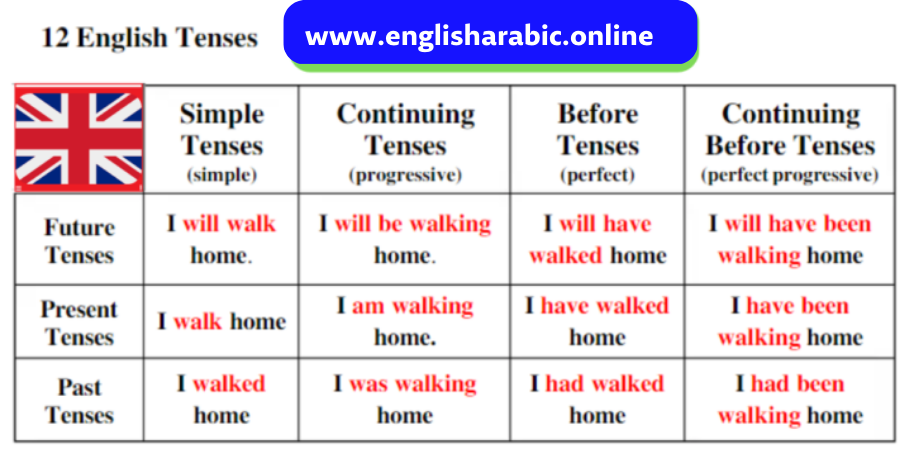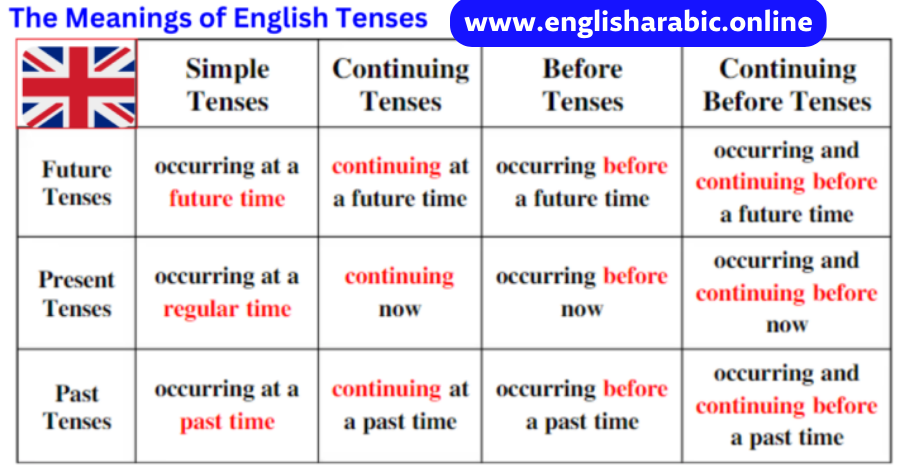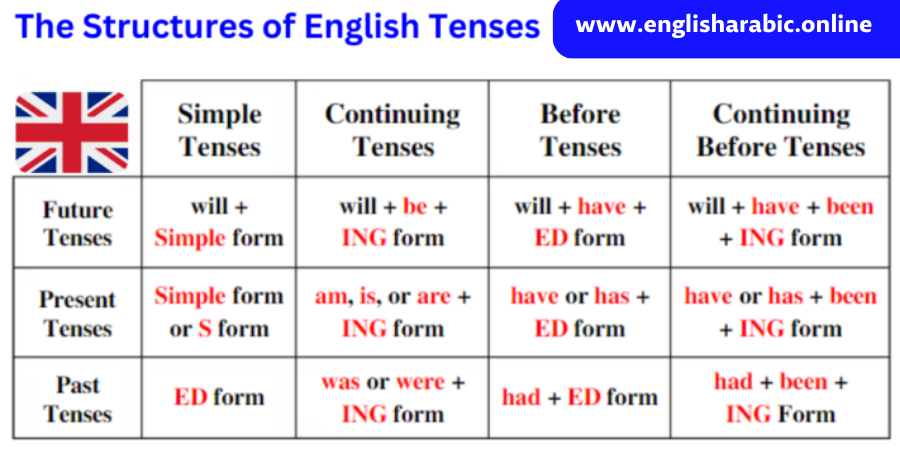Past Continuous Tense
The English Tense System
The links below are to lessons for each of the 12 basic tenses.
In each lesson we look at two aspects of the tense:
- Structure: How do we make the tense?
- Use: When and why do we use the tense?
Some lessons look at additional aspects, and most of them finish with a quiz to check your understanding.
Present Tense
Present Continuous Tense
Present Perfect Tense
Present Perfect Continuous Tense
Past Tense
Past Continuous Tense
Past Perfect Tense
Past Perfect Continuous Tense
Future Tense
Future Continuous Tense
Future Perfect Tense
Future Perfect Continuous Tense
We use different tenses to describe the time that the verb refers to.



Past continuous
We use the past continuous tense (also known as the past progressive) to talk about actions in the past that lasted for some time.
It is formed by using was/were + present participle.
| Subject | Simple past tense of
“to be” |
Present Participle |
| I/he/she/it/Maggie | was | talking. |
| They/we/you/you all | were | talking. |
Note: Stative Verbs
Some verbs, called “stative” or “non-continuous” verbs, can’t be used in continuous tenses. Others can be used in continuous tenses, but their meaning changes. Make sure you understand the difference between stative and non-stative verbs while using past continuous and all continuous tenses. You can find more information here.
When to use the Past Continuous Tense
An Interrupted Continuous Action
When one activity in the past is interrupted by another activity, we use past continuous for the original activity and past simple for the interrupting activity.
- I was cooking when you called.
- John was watching television when the power went off.
- I was doing my homework when I realized I was doing the wrong assignment.
- You weren’t listening when I told you I had plans tonight.
A Specific Time as an Interruption
You can also use the past continuous when the “interruption” is a specific time. In this case, the original action started before the specific time, and continues after it.
- I was still working at 8:00 pm last night.
- Elaine was living in Paris this time last year.
Note: If you use the simple past with a specific time, it means that the action started at that time. If you use past continuous, the action is continuing during the specific time.
- I ate breakfast at 8:00 am. (Meaning: I started eating breakfast at 8:00 am.)
- I was eating breakfast at 8:00 am. (Meaning: At 8:00 am, I was already eating breakfast, and I continued eating it.)
Setting the Background or Atmosphere
In narratives, the past continuous tense often sets the scene or the mood for further events, which happen in the simple past.
- When I walked into the daycare, children were running around the hallways and jumping from desk to desk. One little girl was cutting a boy’s hair, and several children were crying loudly while eating birthday cake with their hands. I knew I didn’t want to work there.
- Rain clouds were gathering in the sky, and thunder was rumbling to the East. The storm would be here soon, so I closed all the windows.
Two Actions Happening at the Same Time
You can use past continuous to talk about two ongoing actions happening simultaneously.
- He was washing dishes and I was drying them.
- The kids were playing in the yard while the adults were talking on the front porch.
Annoying or Repeated Actions in the Past, often with “Always”
To emphasize the repetitiveness of an action (and how the repetitiveness annoys you), use the past continuous tense with an adverb of frequency, usually “always.”
- Mark was always complaining that he didn’t have a girlfriend.
- The little girl was always losing her mittens until her mother sewed them onto the sleeves of her jacket.
Negative Statements
The negative of past continuous is very simple –- just add “not” between the “to be” verb and the present participle:
- Amanda wasn’t driving that night.
- The kids were not lying when they said they saw a dog on rollerskates.
- You weren’t drinking last night, were you?
Question Forms
Information Questions about the Subject:
To make a question about the subject of a sentence, use a question word as the subject. the form is: question word + “was/were” + main verb (present participle) + rest of sentence:
- ??? was riding a horse. –>
- Who was riding a horse?
- ??? people were playing football. –>
- How many people were playing football?
- ???’s child was eating carrot sticks. –>
- Whose child was eating carrot sticks?
Questions about the Verb or Words after the Verb
To make a yes/no question about the verb or words after the verb, put the “to be” verb in front of the subject:
- Were you listening?
- Was he talking?
- Was Andy playing basketball?
To make an open-ended question about the verb or words after the verb, put a question word (who, what, where, when, why, how) before the “to be” verb in front of the subject:
- What were you listening to?
- Who was he talking to?
- Where was Andy playing basketball?
Are you ready to see how well you know the Past Continuous Tense Tense ?
Try this fun QUIZ .